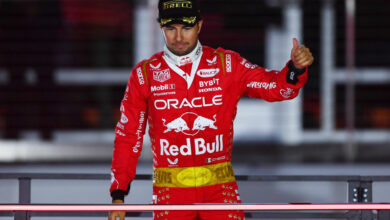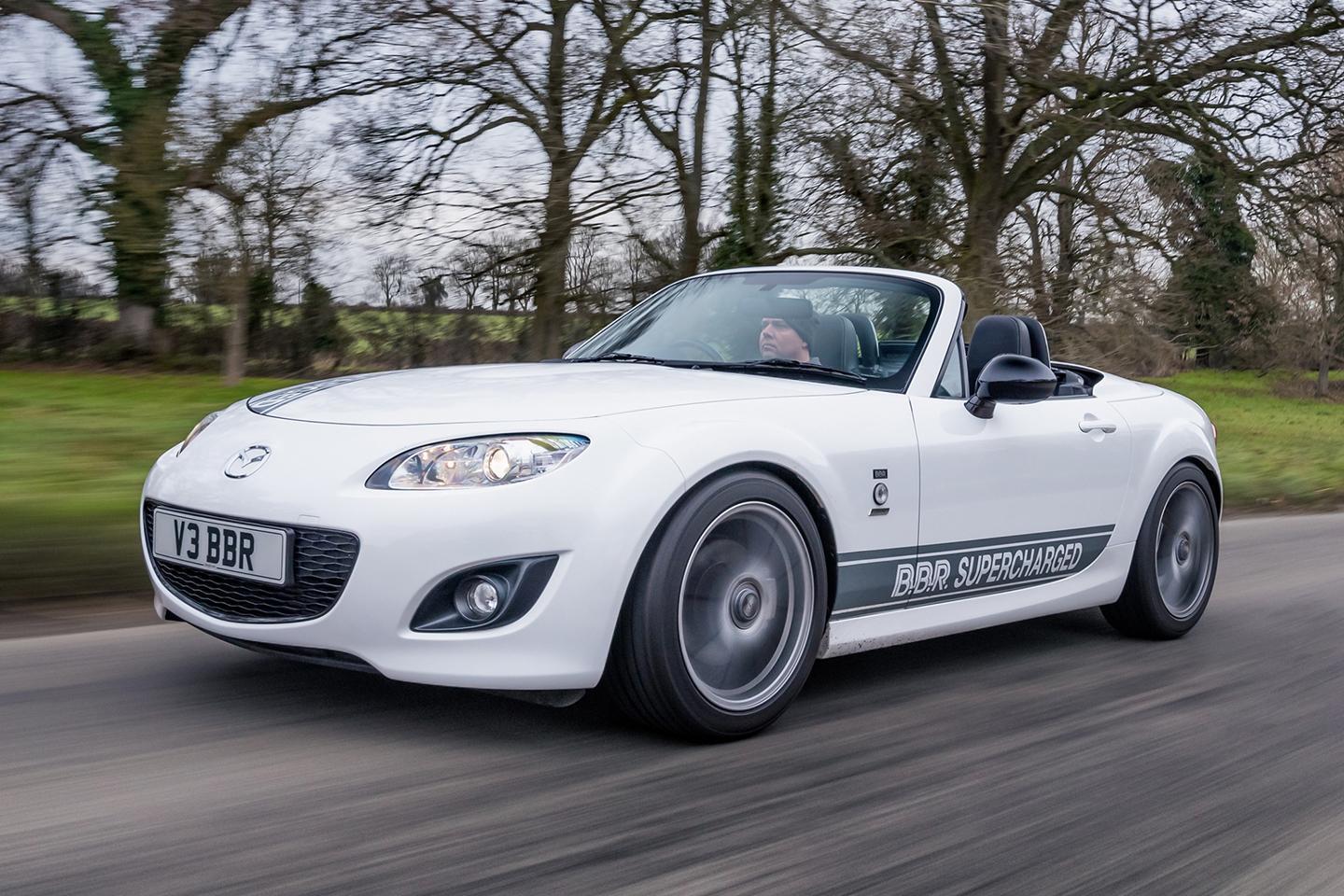F1 Race Weekend Explained: A Beginner’s Guide From Practice To Podium
Get ready for the ultimate Formula One experience as we take you through the ins and outs of an F1 race weekend. From the roar of engines during practice sessions to the nail-biting tension of qualifying and the sprint races, we’ll cover it all. This article will give you an all-access pass to the world of F1 racing. If you’re wondering what happens during an F1 race weekend, then we’ve got you covered.

What Happens On The Friday Of An F1 Grand Prix Weekend?
Free Practice 1 & 2
On the Friday of an F1 Grand Prix weekend, there are typically two practice sessions, known as “Free Practice 1” and “Free Practice 2.” These practice sessions give teams and drivers a chance to test out the track and make any necessary adjustments to their cars before the more important qualifying and race sessions on Saturday and Sunday.
During the practice sessions, teams and drivers will typically focus on fine-tuning the car’s set-up, trying out different tire compounds, and working on their race strategy. The data collected from these practice sessions is also used to make further adjustments to the car and plan for qualifying and the race. The teams may also use these practice session to test some new parts and components on the cars or develop some new set up for the upcoming races.
Each practice session typically lasts for an hour.
Sprint Race Weekend
With the introduction of the sprint race format in 2021, some Fridays of F1 Grand Prix weekends have a change of format. Instead of having two practice sessions, there will be a single practice session in the morning and a qualifying session (see below) in the afternoon, followed by the sprint race on Saturday.
The teams will have to adapt their strategy for the weekend as they will have less practice time to work on the car setup, and the sprint race will give them an opportunity to test different strategies for the main race. This format is expected to make the race more unpredictable and exciting.

What Happens On The Saturday Of An F1 Grand Prix Weekend?
Free Practice 3:
On the Saturday of an F1 Grand Prix weekend, there is usually a third practice session, known as “Free Practice 3” first. This practice session gives teams and drivers a final opportunity to test out the track and make any necessary adjustments to their cars before the all-important qualifying session.
Qualifying:
After the practice session, the qualifying session takes place. Qualifying is a critical part of an F1 Grand Prix weekend. The qualifying session takes place on Saturday and determines the starting grid for the race on Sunday. The qualifying session is divided into three parts, known as Q1, Q2, and Q3.
In Q1, all drivers participate and have to set a time within 18 minutes, the five slowest drivers are eliminated, and the remaining drivers move on to Q2.
In Q2 the process is repeated for a 15 minute session, and the remaining 10 drivers participate in Q3.
In Q3, which lasts 12 minutes, the driver who sets the fastest lap time earns pole position, the second-fastest driver will start second and so on.
During the qualifying session, drivers will only have a limited number of laps to set their fastest time. Teams will also make strategic decisions, such as when to send their drivers out on track and what tires to use.
Sprint Race Weekend:
On a Sprint race weekend the qualifying session will have taken place on the Friday and the outcome of that decides the starting positions for the sprint race which happens after Free Practice 2 on the Saturday.
This sprint race is a shorter race that aims to make the weekend more exciting and unpredictable for the teams and drivers. The sprint race serves to determine the starting grid for the main race on Sunday. The sprint race lasts around 30-35 minutes, covering a distance of 100km and points are awarded to the top 8.

What Happens On The Sunday Of An F1 Grand Prix Weekend?
On the Sunday of an F1 Grand Prix weekend, the main event takes place, the race. This usually lasts around 1 hour and 30 minutes to 2 hours. The race starts at a predetermined time, usually in the afternoon, and the drivers will complete a certain number of laps around the circuit, depending on the circuit’s length.
During the race, drivers will make pit stops where they can change tires, refuel, and make other adjustments to their cars. Pit stops are crucial part of the race strategy and teams will plan them carefully to gain an advantage on the track.
EXCEPTION: 2023 Las Vegas Grand Prix
The Las Vegas Grand Prix, which is joining the F1 calendar from the 2023 season, will be an exception to the normal weekend set-up. The race organisers and F1 decided to have the main event, the race, on the Saturday evening. So, it will follow the standard format (without the sprint race), but starting on the Thursday instead of the Friday.

What Happens Before An F1 Race?
- Team and driver press conferences: Before the race, teams and drivers may participate in press conferences where they answer questions from journalists about their expectations for the race, their strategies, and other topics of interest.
- Promotional events: There may be various promotional events leading up to the race, such as product launches, sponsor activations, and other marketing events.
- Technical meetings with race officials: Teams may attend meetings with race officials to discuss any rule changes or updates, as well as to review track conditions and other important information.
- Pit lane walks: Fans may have the opportunity to walk through the pit lane and see the teams and cars up close.
What Happens After An F1 Race?
- Podium Ceremony: The top three finishers of the race will step onto the podium to receive their trophies and spray champagne. The national anthem of the winner will be played, and the driver will also receive a winner’s trophy.
- Press Conference: The top three finishers, as well as selected other drivers, will attend a press conference where they will answer questions from the media about the race.
- Parc Ferme: After the race, all cars will be impounded and checked for compliance with technical regulations.
- Debriefs: Teams will hold debriefs with their drivers to discuss the race and gather feedback. Data analysts will also review the telemetry and lap data from the cars to identify areas for improvement.

How Does F1 Point Allocation Work?
Points are awarded for the the drivers that finish in the top 10 for the grand prix on the Sunday with the most amount of points up for grabs being 25 points. An additional point is awarded to the driver who gets the fastest lap, so long as they finish in the top 10.
Drivers can also get points from the sprint race if they finish in the top 8. All of the points are noted below, according to the Formula 1 website.
Sprint race points:
| Place | Points |
|---|---|
| 1st | 8 |
| 2nd | 7 |
| 3rd | 6 |
| 4th | 5 |
| 5th | 4 |
| 6th | 3 |
| 7th | 2 |
| 8th | 1 |
Grand Prix points:
| Position | Points |
| 1st | 25 |
| 2nd | 18 |
| 3rd | 15 |
| 4th | 12 |
| 5th | 10 |
| 6th | 8 |
| 7th | 6 |
| 8th | 4 |
| 9th | 2 |
| 10th | 1 |
Conclusion
In conclusion, Formula One race weekends offer a complete package of thrilling entertainment for motorsports enthusiasts. The on-track action, including practice sessions, qualifying, and the main race, provide a window into the high-speed and competitive world of motorsports. Additionally, the off-track activities such as pit lane walks, meet and greets with drivers, and car displays, give fans an opportunity to get an up-close and personal experience with their favorite teams and drivers. All in all, Formula One race weekends are an event not to be missed, offering a unique blend of advanced technology, fierce competition, and non-stop excitement.


